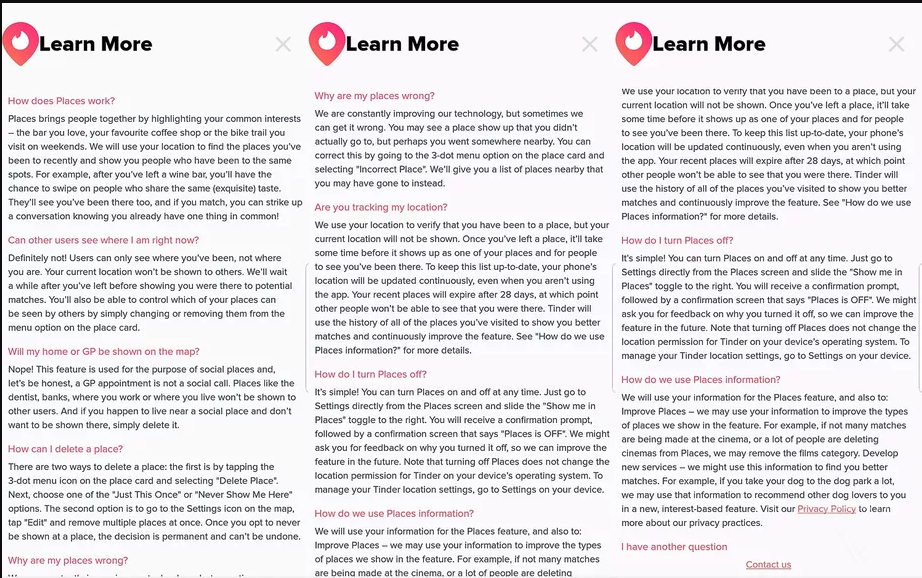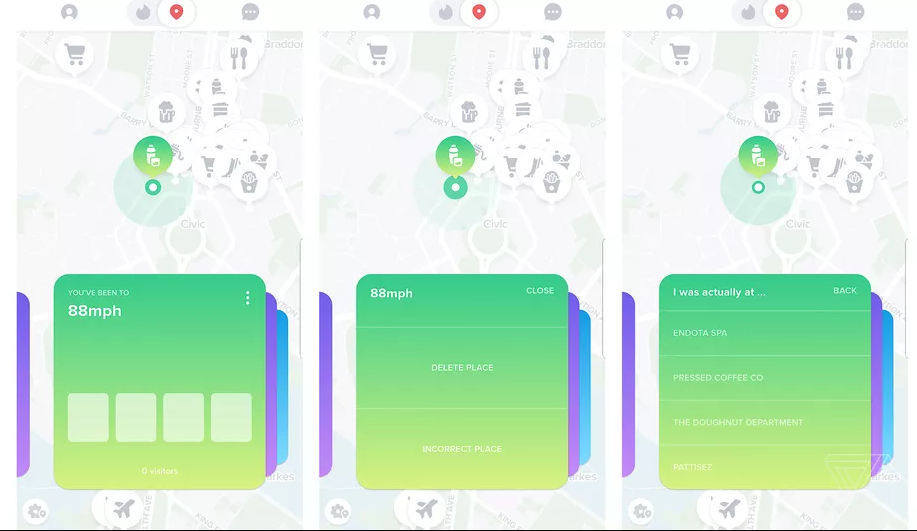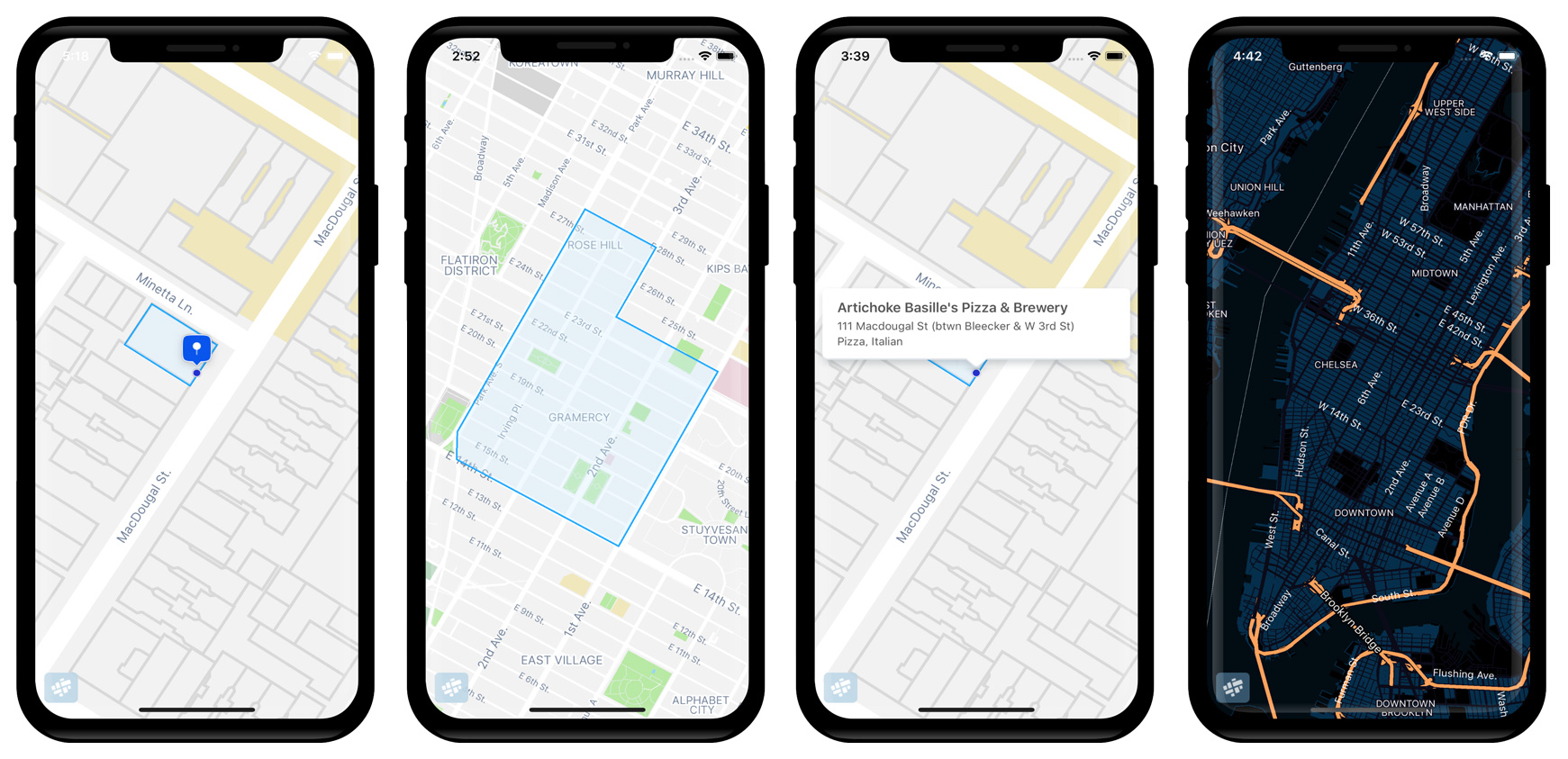
Tinder’s new location-based feature is making us want to swipe left
Remember how we told you Tinder was all set to roll out “really sexy” [their words, not ours] location-based features this year? Well, now that the details of the first feature from that list are out, we want to swipe left and fast, because guys, this one looks straight out of Stalkerville!
It all started with The Verge getting its hands on the screenshots of Tinder’s new location-tracking feature called Places. These pages pretty much explain everything there is to know about how Places would work:

OK, stop looking for your glasses. Here’s everything you need to know:
- Tinder will use your location to see which social spots (wine bars, coffee shops, hiking trails, etc.) you frequent. After you leave that place, you will get a notification from Tinder showing you others who have visited that place.
- Tinder says it will not share your location in real-time and will wait for an ambiguous period called “a while” before letting other Tinder users know that you have also been there.
- To ensure that this feature works like Tinder intends it to, the app will keep tracking your location even when you’re not using it. The list of places you have visited will be visible to other Tinder users for a period of 28 whole days.
- If you don’t want others to know you have visited a particular spot, you will get the option to delete that place from your list of recent places. You can also specify whether it’s a one-time thing or you never want to be shown there.
- Apart from using your location to find other Tinder users who like the same social spot, the dating app would like to use your data to find interest-based matches (like a fellow canine lover in a dog park you visit often) and to improve its services (like removing cinema halls from the list of social spots if a lot of people keep deleting it from their lists).
- Tinder has also clarified that its list of social spots doesn’t include places like the bank or the dentist’s office, and definitely no residential areas or corporate campuses.
Here’s another screenshot from The Verge showing how Places looks like without any users being populated on the map:

Thankfully, this feature is an optional one and Tinder is letting you choose whether you want others to know about your whereabouts or not. Imagine someone whom you don’t want to strike a conversation with turning up at your favorite pub in hopes of changing your mind!







